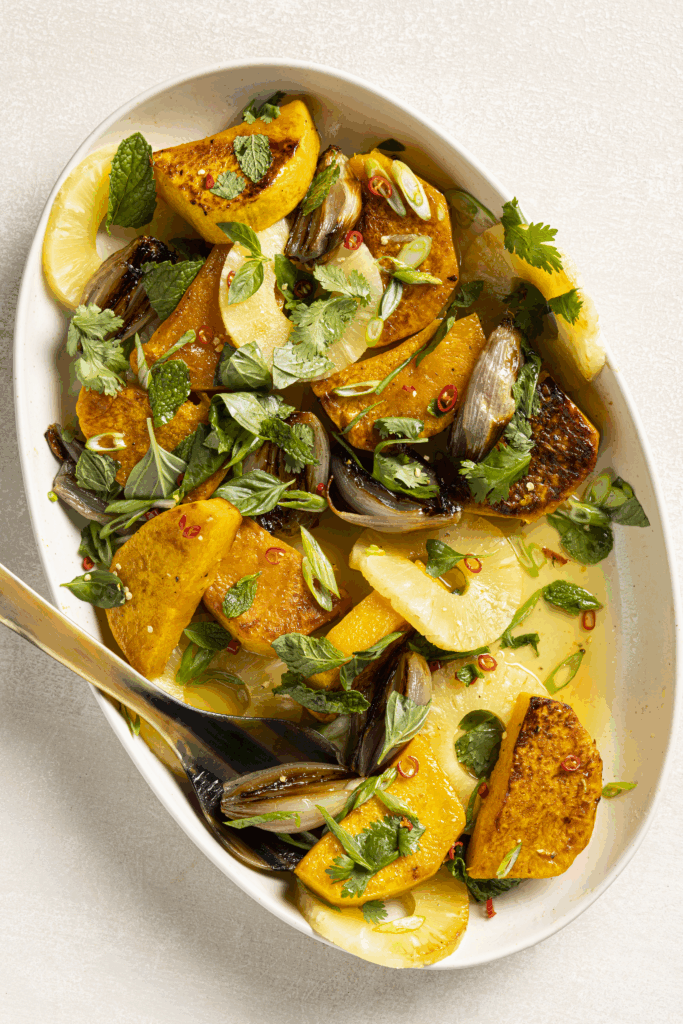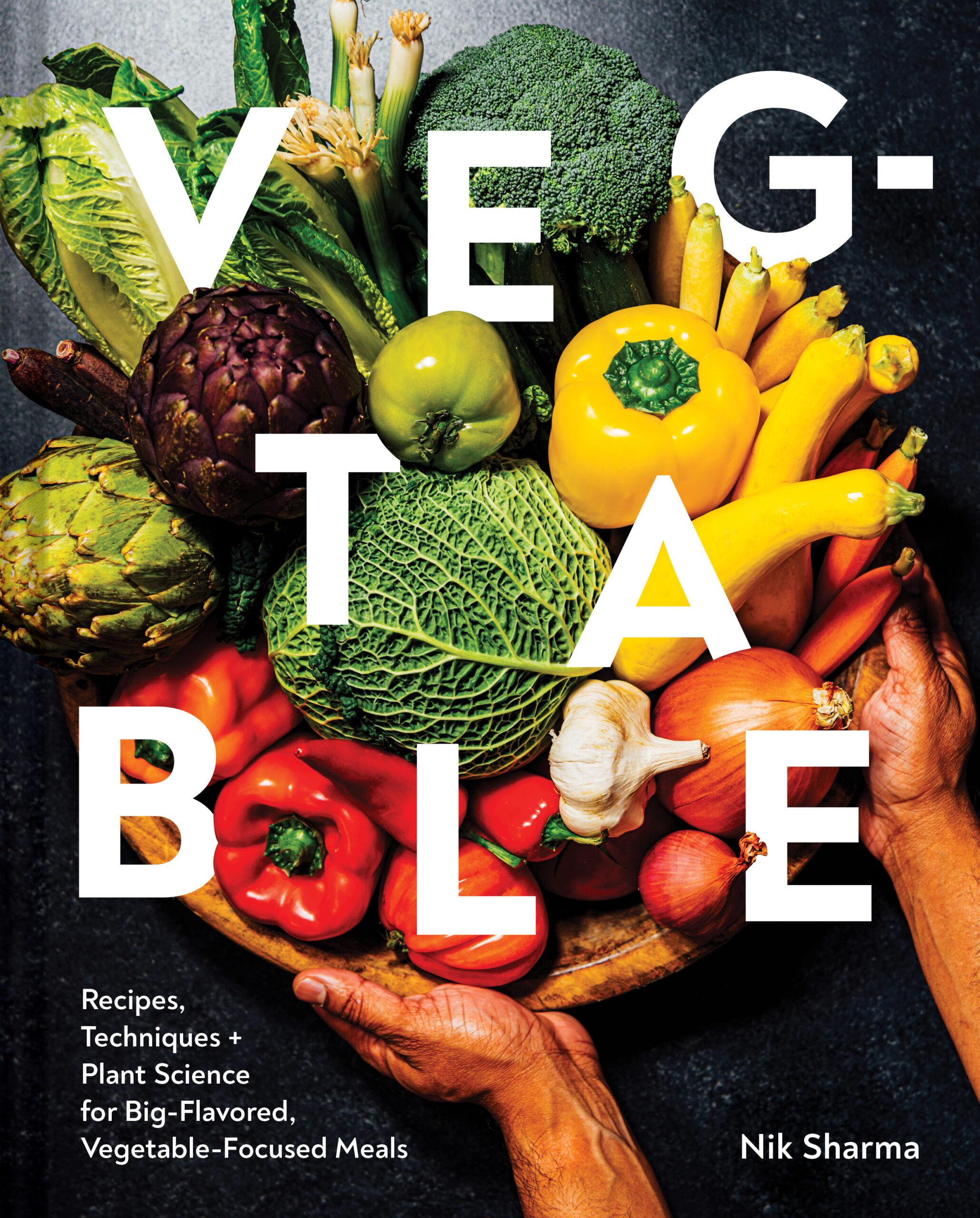
The Perfect Bridge Between Sweet and Savory
There’s something magical about dishes that walk the line between sweet and savory. This Roasted Squash and Shallots with Pineapple and Honey-Lime Dressing—a recipe I developed for America’s Test Kitchen—celebrates that balance beautifully. Butternut squash and shallots caramelize in the oven until their edges deepen and turn nutty, while juicy pineapple adds bursts of acidity and sweetness. A drizzle of honey-lime dressing pulls everything together with a bright, tropical tang.
The Science Behind the Flavor
The secret to the irresistible depth in this dish lies in how sugars and acids interact.
- Honey and heat: When the honey-oil coating meets the high oven temperature, natural sugars caramelize, giving the squash a rich golden crust.
- Acidity and balance: Lime and pineapple juices cut through that sweetness, keeping the dish lively and fresh.
- A touch of umami: Fish sauce adds subtle savoriness that amplifies every flavor.
The result is a dish that’s colorful, layered, and surprisingly complex, all built on a few pantry staples.
Finishing Touches
Once roasted, the vegetables are arranged with pineapple rings and scattered with a mix of herbs — Thai basil, mint, and cilantro, plus scallions and sliced Thai chiles for brightness and heat. It’s as fragrant as it is beautiful on the table, making it an excellent side for dinner parties, festive meals, or even a new twist on your holiday spread.
A Special Note on Substitutes: Basil is NOT a good substitute for Thai basil in this recipe.
Basil (the common sweet basil used in Italian cooking) and Thai basil come from the same species (Ocimum basilicum). Still, they have very different flavor compounds, textures, and culinary behaviors, which is why one doesn’t perfectly substitute for the other.
Here’s why:
1. Aroma and Flavor Chemistry
- Sweet basil is dominated by linalool and eugenol, which give it a soft, sweet, clove-like fragrance typical of Mediterranean dishes.
- Thai basil, on the other hand, contains higher levels of methyl chavicol (estragole), which gives it a sharp, anise-like, slightly peppery flavor. It tastes spicier and more pungent, with less of the sweet, floral roundness that Italian basil has.
So, when you use sweet basil in place of Thai basil, you lose that distinctive licorice-spice backbone central to Southeast Asian dishes.
2. Texture and Structure
- Thai basil has thicker, sturdier leaves with a faint purple hue and doesn’t wilt as quickly under heat.
- Sweet basil’s delicate leaves bruise and blacken easily, which can make them less suitable for stir-fries, curries, and soups that are cooked hot.
3. Culinary Role
- In dishes like Thai curries, pho, or stir-fried clams, Thai basil contributes both aromatic lift and structure when added hot.
- Sweet basil tends to turn soggy and overly sweet, muting the spicy, herbal balance those dishes rely on.
4. Visual and Cultural Identity
- Thai basil’s purple stems and smaller leaves are part of the signature look and identity of many Southeast Asian dishes. Swapping it out changes not just flavor, but also authenticity and presentation.
Best substitute if you can’t find Thai basil:
Try holy basil (tulsi) for a spicier edge, or mix sweet basil + a small pinch of anise seeds or tarragon to approximate Thai basil’s anise note; but it still won’t be exact.
Get the Full Recipe
You can find the complete recipe, measurements, and step-by-step instructions on America’s Test Kitchen:
👉 Get the Roasted Squash and Shallots with Pineapple and Honey-Lime Dressing Recipe on ATK
If you enjoyed this dish, you might like a few more recipes that celebrate the same sweet-savory balance and vibrant acidity. Try my;

